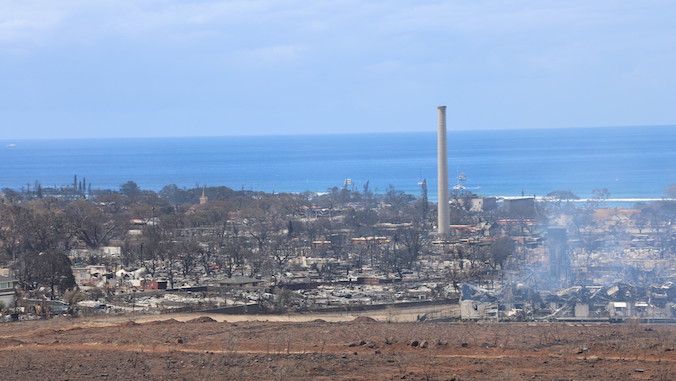
In the wake of the deadly Maui wildfires, the University of Hawaiʻi is working to develop a new wildfire forecast system using artificial intelligence for the state of Hawaiʻi to enhance public safety, preparedness and risk mitigation.
The project is supported by a $1-million grant from the Hawaiʻi State Legislature.
This early detection system will allow authorities to issue timely warnings to enhance the preparedness of first responders and enable the broader community to take proactive measures, such as evacuation planning and home-risk mitigation. By providing timely information, these forecasts can help reduce the overall impacts of wildfire through rapid response and suppression efforts.
Updating older forecast system
The multidisciplinary research team will work together to improve the state’s existing forecast system, which currently uses data from a single station at the Honolulu airport. Researchers say that AI and machine learning can be used to predict the likelihood of wildfire occurrences more accurately than traditional approaches, especially in Hawaiʻi’s diverse microclimates (climate conditions within a small, specific area that may differ from the surrounding region due to factors like terrain, vegetation or urbanization). Hawaiʻi has 10 of the world’s 14 climate zones, based on the Köppen climate classification.
“By better anticipating potential wildfire locations and intensities, the forecast system can assist emergency responders to allocate resources more efficiently,” said Sayed Bateni, project principal investigator and professor in the UH Mānoa Department of Civil, Environmental and Construction Engineering and Water Resources Research Center (WRRC). “This includes positioning of firefighting teams, equipment and helicopters in strategic locations based on the forecasted fire behavior. The rapid response may lead to better control of the fire, reducing its spread and resultant damage.”
In collaboration with the National Weather Service, Department of Land and Natural Resources–Division of Forestry and Wildlife, Hawaiʻi Emergency Management Agency, and county fire departments, wildfire risk forecasts from this project will be integrated into the Red Flag Warning to improve the overall preparedness and response capabilities of these agencies.
This work will be led by Bateni; College of Engineering Dean Brennon Morioka (co-principal investigator); Clay Trauernicht (co-principal investigator), extension specialist in ecosystem fire in the Department of Natural Resources and Environmental Management; and WRRC Director Tom Giambelluca (co-principal investigator).

